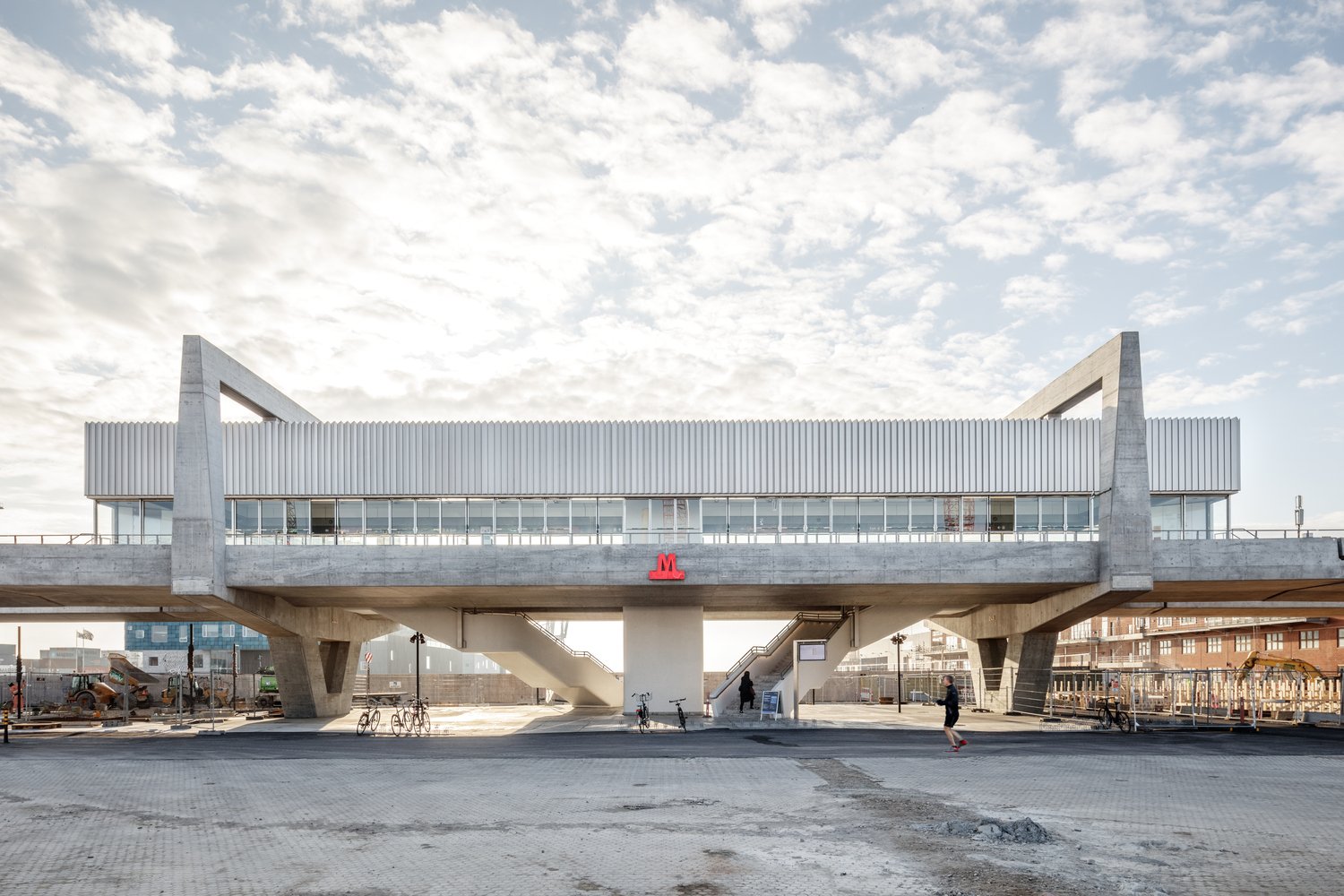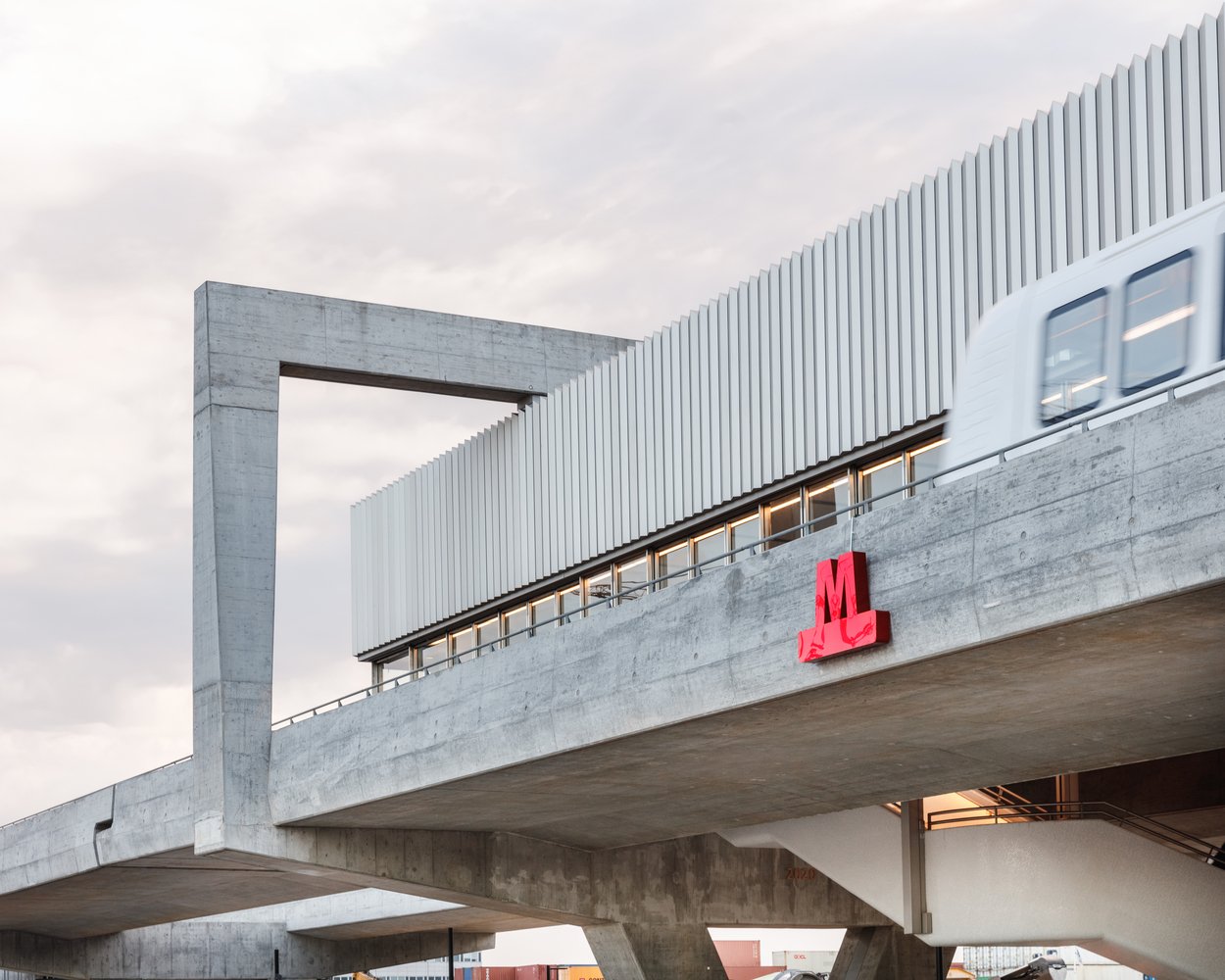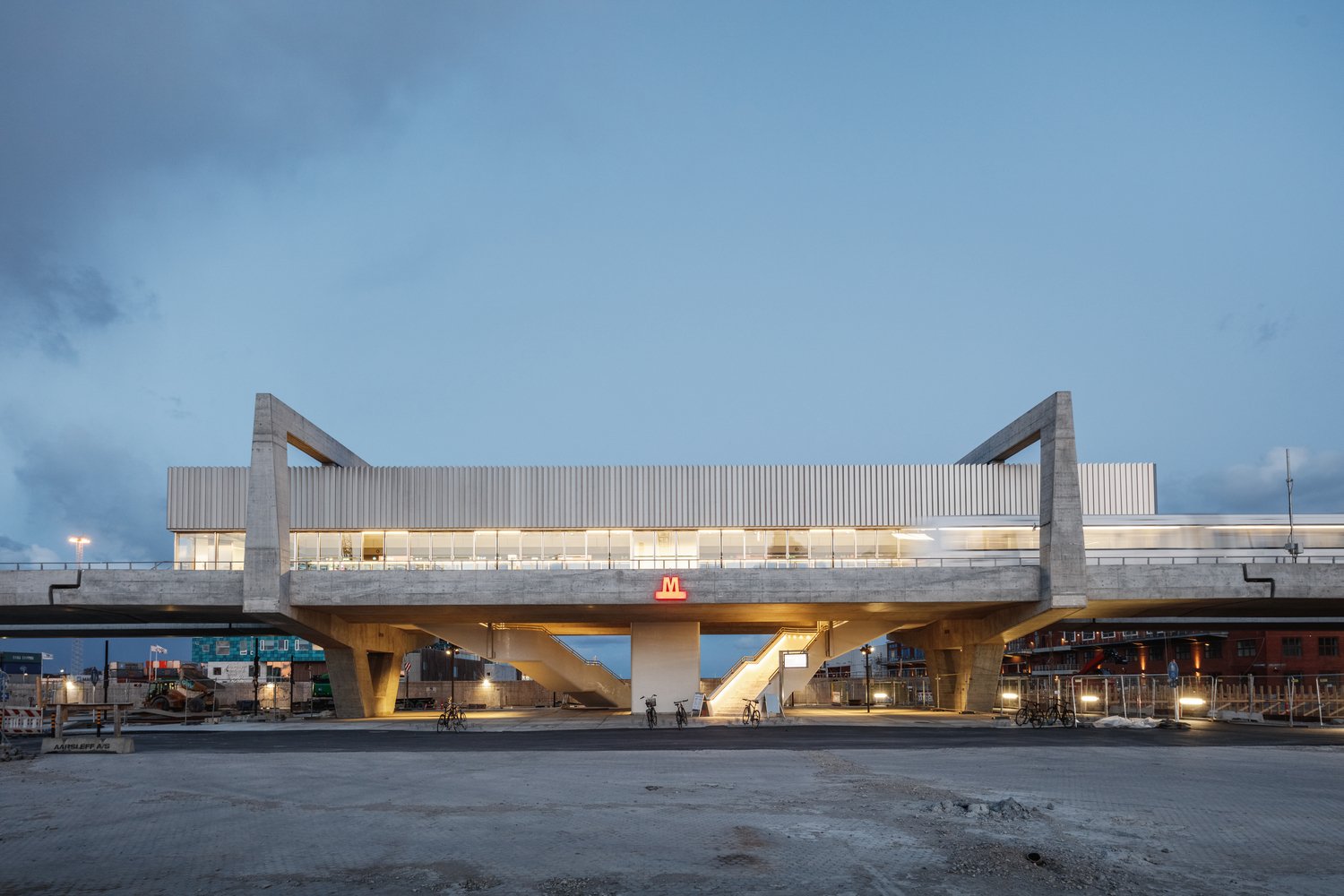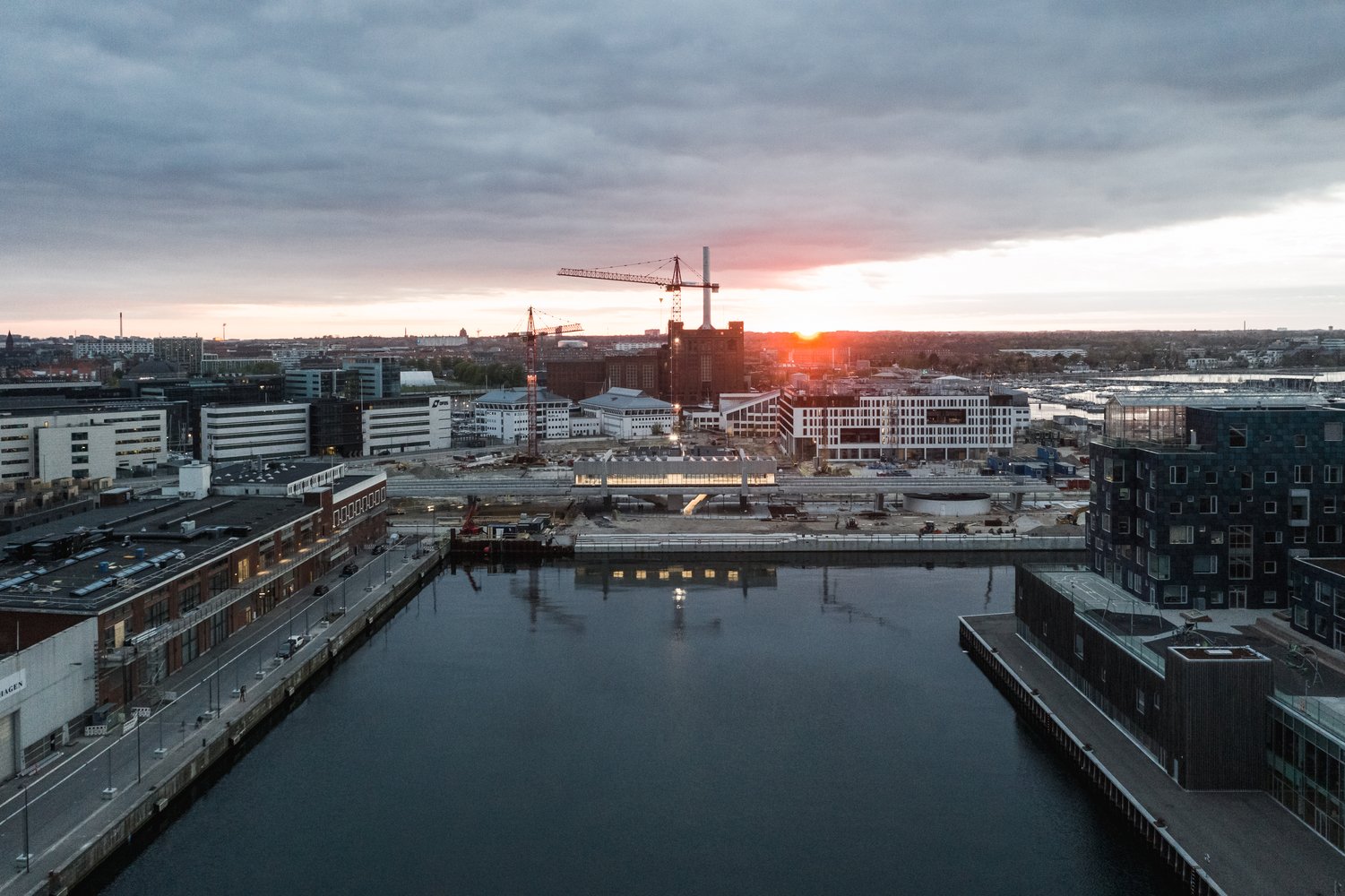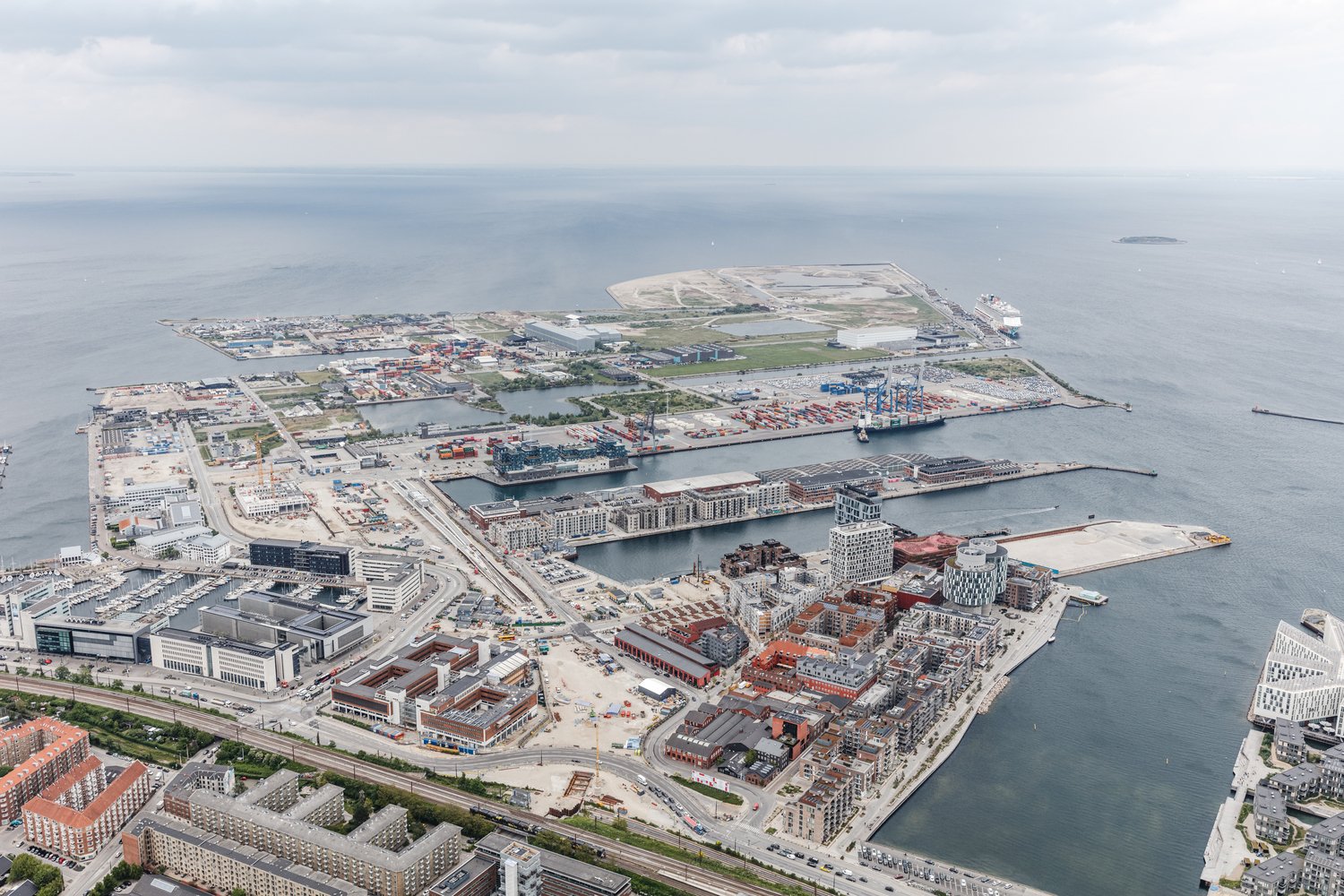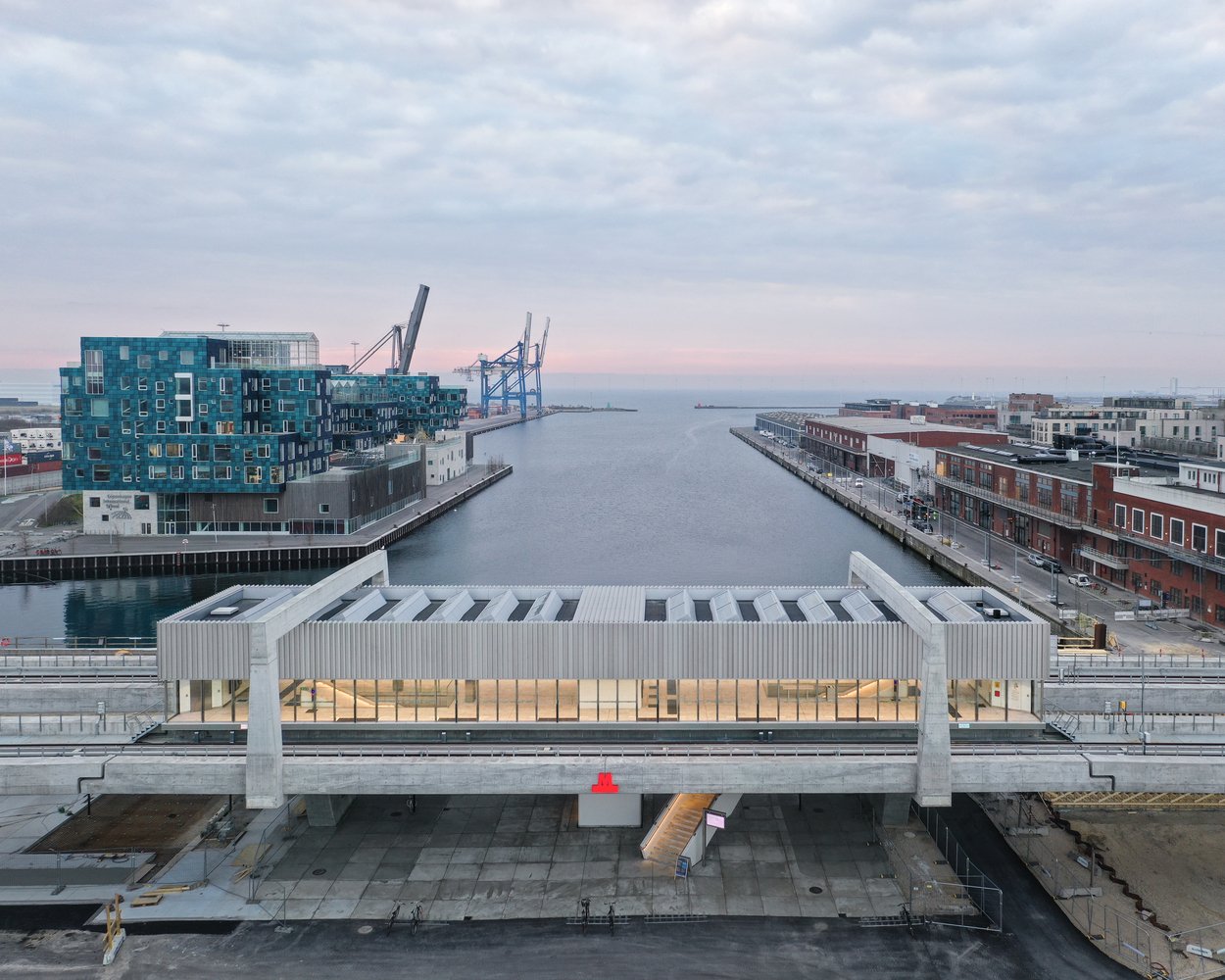Orientkaj Metro station | Modern brutalism and public transportation
November 23, 2022
Orientkaj
A modern brutalist metro station reflecting the Copenhagen docks of Nordhavn
First introduced in 2002, the Copenhagen metro system opened up train connections between Copenhagen and the neighborhoods on the island of Amager, which had previously only been accessible via bus. It was an instant success and in 2007, the government approved the plans for the addition of a 3rd line, M3, and in 2012 approved the addition of a 4th line, M4, connecting the remaining neighborhoods of the Danish capital to the metro system.
Anyone who has ever ridden the Copenhagen metro is sure to agree that it is a great example of a well designed 21st century public transport system, not only visually, but also in usability. All stations follow a similar blueprint, while stylishly reflecting the character of the urban areas they serve, the Orientkaj station on the M4 line is no exception.
Opened in 2020, the above ground Orientkaj station is anchored by large concrete arches onto the Copenhagen harbor. Designed as a glass, concrete and aluminum box offering panoramic views over the dock and water, on a clear day you can see all the way to neighboring Sweden. Conceived by London-based architects Arup and Denmark’s Cobe practice, the station traces the outline of a shipping container referencing the large-scale volumes, working materials and brutalist features of the nearby docks of Nordhavn.
Despite the station’s scale and sharp outline, the architects’ passenger-focused approach is highlighted by the detailing inside the station. The vast rectangular hall is column-free, supported by the external concrete frames. Skylights mimicking the shed roofs found in the area’s former industrial buildings allow natural light to flood the station during the day, while integrated lighting gives a pleasant ambiance at night.
Nordhavn is a new city district in Copenhagen, which the Orientkaj station is serving. The plan is to create a city of sustainable mobility, where it is easier to walk, bike or use public transport, than it is to drive your own car. The architecture of the station cleverly reflects this by minimizing the station’s footprint while maximizing the open, flexible urban space to accommodate a range of future uses, including bike lanes and public urban space along the waterfront.
If you enjoy our content, why not sign up below to our newsletter to receive updates about new content, campaigns, and product releases.


